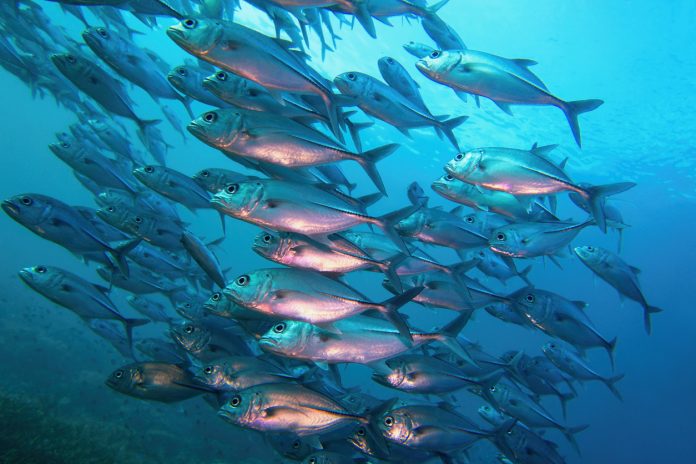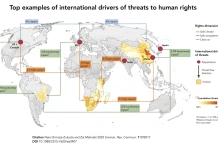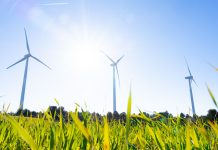Phil Haslam, Managing Director of North Atlantic Fishing Company, guides us on finding space for safe and sustainable pelagic fishing in this special marine focus
As marine space becomes increasingly congested and contested, achieving a balance between protecting our oceans and seas and assuring their sustainable productivity is becoming increasingly complex. Environmental conservation measures, renewable energy development, aggregates extraction, undersea cables and food production from the sea are all worthy endeavours. Still, it is essential to guard against the ‘new being the enemy of the old’.
There is a tension between the development of marine space to enable economic growth and the achievement of net-zero policy commitments while recognising primary marine food production areas and enabling continued access to them.
There can be a simplistic characterisation of the fishing industry which states that its inherent mobility will allow it to mitigate the impact of development activities that displace it from its traditional grounds –in short, “you’ve got a boat, you can move to other fishing grounds”. If only it were that simple. Of course, fish stocks move to find food sources and react to human interventions, but they are still territorial. The fishing industry has a catalogue of experience and expertise that can help predict where and when fish stocks will be at their most productive to enable responsible and judicious harvest to feed people. As with all businesses, the supply of raw material needs to be assured, and if it is interrupted, it immediately causes risk to the business model and/or increases costs.
This tension is evident in the pelagic fishing sector. Implementing marine protected areas (MPAs), coupled with expanding offshore infrastructure like offshore windfarms and submarine cable networks, all reduce the available space at sea. These constraints place operational burdens on fishing fleets, limiting their ability to harvest pelagic species, an essential element of global food security.
Intensified competition for marine space
Currently, conservation designations affect approximately 38% of the UK’s Exclusive Economic Zone (EEZ), according to the UK Marine Management Organisation. While these designations seek to introduce essential protections to safeguard habitats and species, they often fail to account for the migratory patterns of fish populations. Fixed restrictions in the space can conflict with sustainable fishing practices and undermine the ability to fish for quota allocations. While there is little doubt that the marine environment needs to be protected, the designation and subsequent monitoring of MPAs to ensure that the desired conservation effect is being achieved is essential. It is concerning that despite the scale of the network of MPAs, only around 10% have effective fisheries management measures in place.
Alongside conservation efforts, the expansion of offshore infrastructure, in particular wind energy, has created further competition for marine space. The UK has committed to generating 50 GW of offshore wind energy by 2030, up from about 12 GW in 2023. Over 2,700 offshore wind turbines operate in UK waters, physically interrupting fishing activity and creating long-term exclusion zones.
Operational and economic consequences
These restrictions are forcing fishing vessels to shift their operations, often pushing them into less productive areas or requiring them to avoid restricted zones. As the space used by wind farms and MPAs grows, access to traditional fishing grounds continues to decline. This leads not only to increased costs but also diminished yields. UK vessels landed a total of around 540 thousand tonnes of fish and shellfish from UK waters, with a first sale value of approximately £900 million. Limiting access to productive grounds could jeopardise this vital revenue stream, impacting business and seafood supply chains.
Supply chain integrity is another concern. The UK currently imports approximately 70% of its seafood for domestic consumption. Limiting domestic sourcing by restricting pelagic fisheries access will increase the reliance on imports and elevate food system vulnerabilities. Pelagic species are highly efficient protein sources and are especially critical as global food systems contend with rising demand and environmental limitations.
Supporting coastal communities through the fishing industry
The fishing industry underpins thousands of jobs across the UK, with deep generational ties to coastal communities. In 2022, there were over 12,000 recorded jobs in the sector, including over 8,000 full-time positions. Of these, 46% were based in England, 40% in Scotland, and 7% each in Wales and Northern Ireland. Pelagic species alone account for 62% of the total quantity of landings by UK vessels, demonstrating the need for a robust workforce in this area. Supporting the fishing industry and its access ensures the well-being and sustainability of these communities, which rely heavily on marine resources.
Ensuring fair representation in marine spatial planning
The fishing industry is at a pivotal moment to speak up and demonstrate its value in planning how our oceans are used, especially as the Planning and Infrastructure Bill moves forward. The bill will see the fast-tracking of over 150 major infrastructure projects, including offshore wind farms. While sectors such as offshore wind, telecommunications, and energy currently have formal input into long-term frameworks for marine use, the fishing industry is often underrepresented, typically being considered only after key spatial allocations have already been made. To meet the goals outlined in the UK Marine Policy Statement, for “clean, healthy, safe, productive and biodiverse seas and oceans”, government planning must incorporate the perspectives and needs of industries like fishing, alongside rapidly growing sectors such as offshore energy.
Achieving equilibrium in marine resource management
Sustainable fisheries management can coexist with marine conservation and offshore infrastructure, provided the industry is engaged early in planning. Instead of setting fixed no-go zones, policyholders should consider the changing, migratory patterns of pelagic fish and use flexible planning methods to manage ocean spaces.
Investments in advanced spatial planning technologies and collaborative decision-making frameworks are crucial. Using modelling systems and fine-scale mapping, it is possible to identify fishing zones that can coexist with conservation and offshore energy efforts.
Finally, recognising the socioeconomic value of the pelagic fishing sector is essential for a number of reasons. It supports not only national food security and employment but also the cultural identity of coastal areas. Prioritising spatial development at sea, without proper consideration for fisheries, risks undermining long-standing, community-based marine traditions.
Ensuring pelagic fisheries’ sustainability
The marine environment is a shared space with often competing interests. While renewable energy and conservation are legitimate and necessary goals, these must be achieved in step with marine food production, not at its expense. Sidelining the fishing sector threatens both ecological balance and food production. A collaborative, data-informed approach based on mutual respect and sector representation is essential to maintaining viable pelagic fisheries now and in future.
The fishing industry needs to be a statutory consultee and included in planning discussions from the outset. Further, access to the technologies and governance systems shaping future marine use will enable the pelagic catching sector to thrive. Its proven adaptability, deep commitment to sustainable practices, and indispensable contribution to food systems and coastal economies more than justify its seat at the top table.











